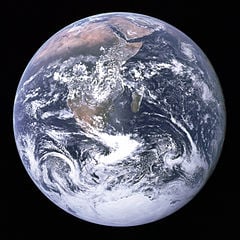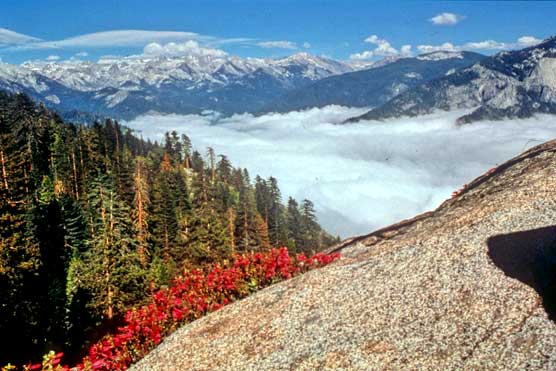In the mid-1980s when I was doing Master’s thesis work, I obtained a Cal Poly college catalog for the years 1984-’86. My research was all about the program I enrolled in when I attended said university located in San Luis Obispo in California, between Sept. 1973 and Mar. 1976 – Engineering Technology.
Interestingly, and quite coincidentally, in fact, I had taken a course as a biology elective, called, “Human Ecology.” The course’s course description in that very same catalog reads: “Examination of the ways in which man is dependent on his environment, his ability to modify it, and the results of such modification. Prerequisite: One quarter of biological science.”1 If memory serves me well, I had not had the biology prerequisite, but was allowed to enroll anyway.

As it relates, I also believe the more important construct here is not so much whether humankind has altered the natural environment as much as it is about how that modification has changed world condition and what that means for human existence moving forward.
The alterations or modifications are too numerous to mention in this space, obviously. So, in this space, I will focus on two that have affected the environment in a negative way.
Stratospheric ozone depletion

Fortunately, that fact was recognized and subsequent efforts made and measures taken are resulting in the ozone layer once again becoming whole. Meanwhile, the bad and sad news, I have learned, is that, in some locales, use of CFCs is again increasing thus having the potential to diminish or negate the positive progress made to date.
Acid rain
There was this problem in the eastern half of the United States in particular called “acid rain.” Emissions of sulfur dioxide into the atmosphere from the burning of coal at coal-fired power plants and at other sources coupled with the production of oxides of nitrogen (NOx), were identified as the primary contributors. The destructive effect this was having on the environment like lakes, vegetation and on human-made structures like stone buildings was compelling. Said building exteriors from the acid rain’s effects, were, literally, being eaten away.
Something had to be done in response and it was.

Firstly, identified had to be the cause of the acid rain. SO2 and NOx were found to be behind this.
Secondly, it was important to pinpoint the sources of such and they were. Coal-fired power generating facilities as well as other sources like factories and automobiles, all played a part.
And, finally, remedies needed to be found to enable the lowering of said emissions from these sources.
A main one was through incorporation of a process known as flue-gas desulphurization which could be achieved through the installation of coal-fired power plant smokestack scrubbers.
For all intents and purposes, the acid rain problem of yesteryear had been erased.
Going forward – ugly duckling or beautiful swan?
Earlier I mentioned what implications of environmental modification will mean for human existence going forward.
Well, the answer to that depends on myriad things, including, what kind of change we’re referring to and to what extent the impact of such on human existence is. It’s a human ecology matter, I’d say.
Out of necessity, as a matter of survival, a resolution to the whittling away of the stratospheric ozone layer was determined. Maybe not a matter of survival but no less important, solving the acid rain dilemma likewise transpired.
The kind of commitment, determination, focus and verve that was summoned to remedy the two situations outlined above, that kind of resolve, should that be mustered, then every environmental crisis we face today – the pollution in the air, soil and water – not only can these be eliminated but with, at minimum, a modicum of effort issued in response, we can see to it that these conditions never surface again.
Compared to what I signed up for all those years ago, I can guess human-ecology-wise, that which is taught in the university classroom today remains much the same. Though, so as to mirror the changed environmental conditions since, with this in mind I have no doubt in my mind, that content lesson plans have been updated taking into consideration that change.

Notes
- Cal Poly 1984-86 Catalog, California Polytechnic State University, p. 310
Images: NASA (top and second); NHSavage (third); National Park Service (bottom)
“The hole that had formed in the stratospheric ozone layer as a consequence, allowed more of the sun’s infrared radiation to reach the Earth’s surface and this was of concern due to the increased risk of skin cancer from such,” as previously stated, was incorrect. Text has since been updated with wording now correct. Reference “Stratospheric ozone depletion” section above.
This post was last revised on Jun. 1, 2020 @ 4:58 p.m. Pacific Daylight Time.
– Alan Kandel
Sirs: Quite interesting but none-the-less omitted the work of Svante Arrhenius.
When I took mu degree in 1975 we had already learnt about these matters. So being given an official copy in 1979 it was quite revealing.
Admittedly some – at that time 1896 to 1910 were sceptical, aren’t they always – the various discussions since then in more recent times have added to the ideas then.